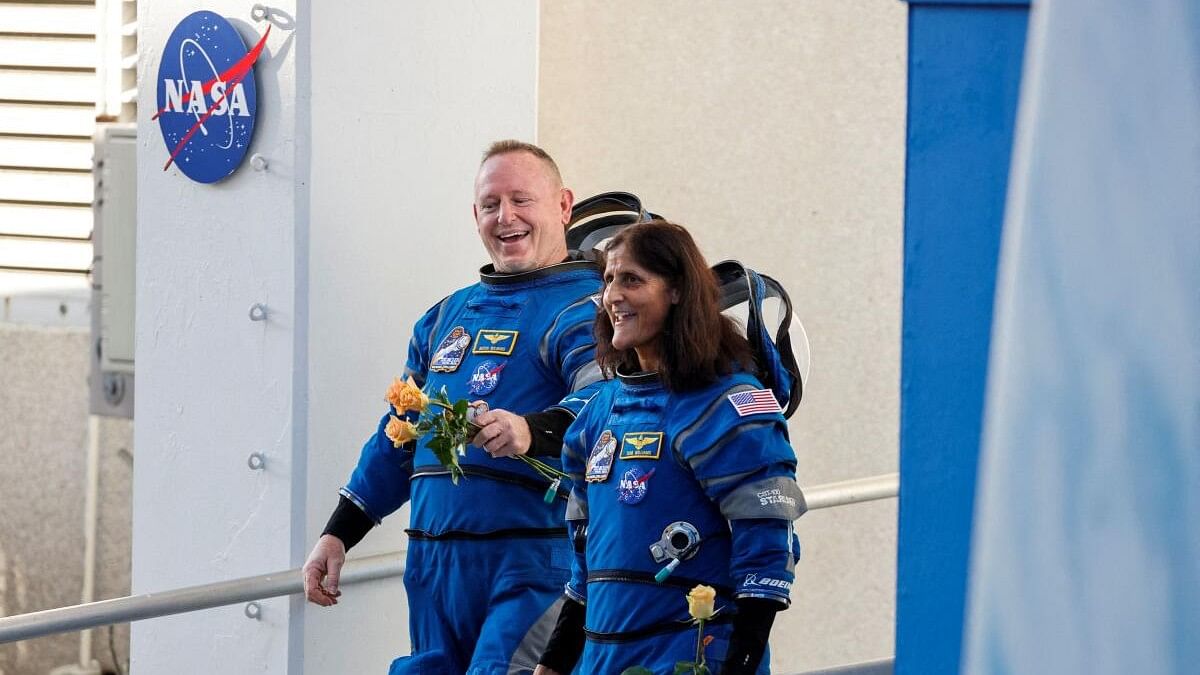
NASA astronauts Butch Wilmore and Sunita Williams
Credit: Reuters File Photo
NASA astronauts Sunita Williams and Butch Wilmore arrived at the International Space Station recently and now it has been reported that the Indian-origin astronaut and others might be in danger due to a 'space bug'.
This bug can cause health issues by infecting the astronaut's respiratory system and leaves other crew members vulnerable to infection as well.
So, what are space bugs?
Astronauts work in confined environments in space, survivng on limited supplies of water. Their experiements require strict containment, and it becomes even more vital to control any contamination under such circumstances, the European Space Agency explains.
Like all humans, astronauts remain vulnerable to infectious diseases. On ISS, which orbits about 400 km above earth, bugs that are found are closely monitored and their physiology is studied to see if the organisms are in any way impacted in the space environment.
All you need to know about the 'space bug' bugging Sunita Williams
IIT Madras researchers and NASA's Jet Propulsion Laboratory (JPL) are currently studying multi-drug resistant pathogens found on the ISS. Their study focuses on the Enterobacter bugandensis bacterial species isolated from the ISS.
This bacterial strain is believed to have evolved, becoming more potent within the closed environment of the space station.
NASA has been studying this bacteria for a while, and in April, reported "Thirteen strains of E. bugandensis, a bacterium notorious for being multi-drug resistant, were isolated from the ISS."
As per the study, due to stress, the strains isolated in the ISS had mutated, becoming "genetically and functionally distinct compared to their Earth counterparts."
As per NASA, these strains could persist in the ISS over time, and has co-existed with other microorganisms, even possibly helping other organisms survive in some cases.
"Our comprehensive analysis illuminated not only the ways these interactions sculpt microbial diversity but also the factors that might contribute to the potential dominance and succession of E bugandensis within the ISS environment," the study published in Microbiome says.
There are two-fold implications of these findings. Firstly, they help understand microbial behaviour, how they adapt, and how evolution works in extreme, isolated environments. Secondly, these findings 'underscore the need for robust preventive measures, ensuring the health and safety of astronauts by mitigating risks associated with potential pathogenic threats.'
NASA noted that closed human-built environments like the ISS are unique areas which provide extreme environments subject to microgravity, elevated carbon dioxide levels, and radiation. Microorganisms introduced to these areas must adapt in order to survive, NASA added. "By delving into microbial dynamics in extreme environments, this research opens doors to effective preventative measures for astronaut health," the space agency has said.